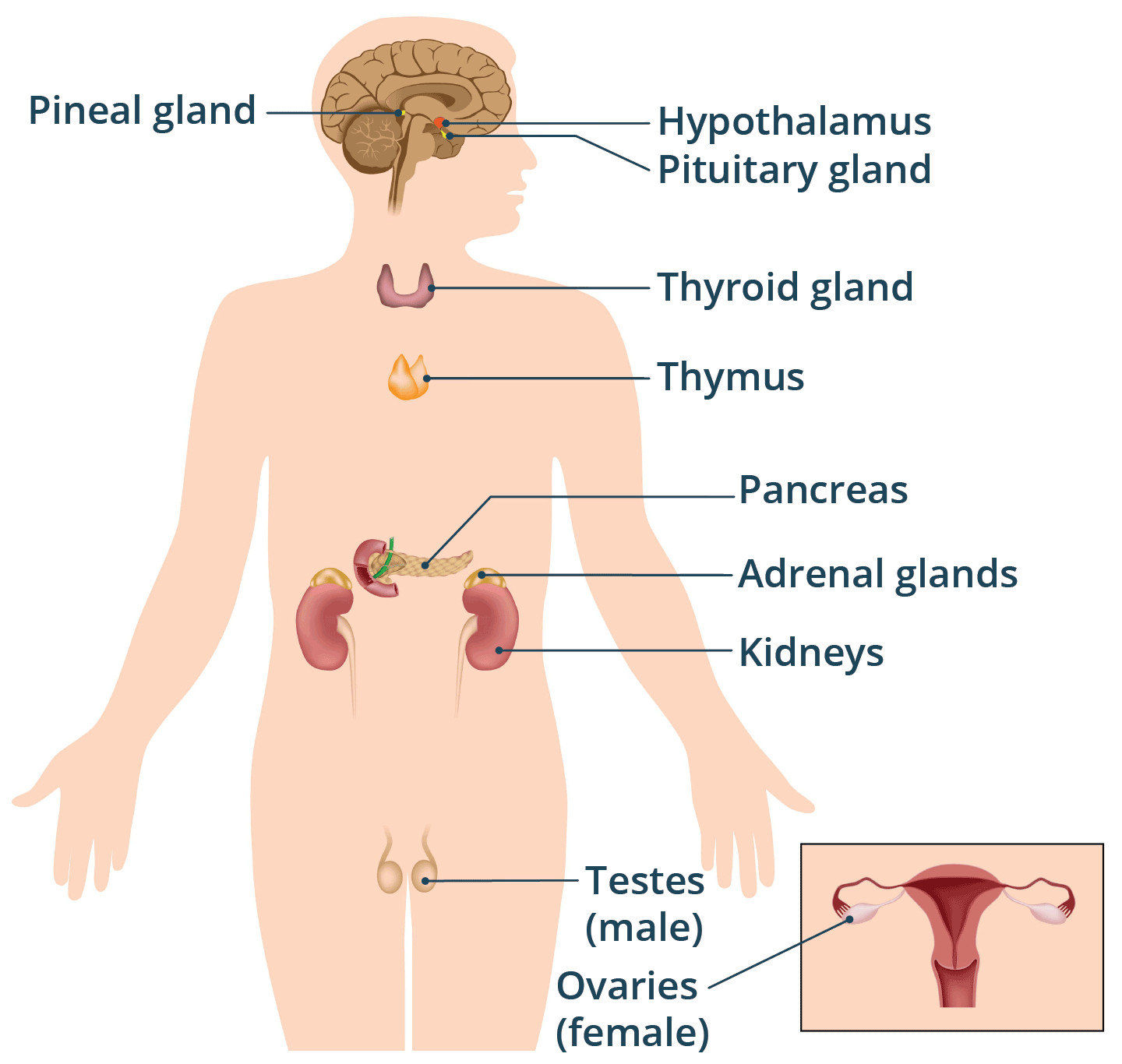Understanding the intricate workings of our body often leads us to discover small yet incredibly vital organs. Among these, the pituitary gland stands out as a true powerhouse. Often referred to as the “master gland,” it plays a crucial role in regulating numerous bodily functions through hormone secretion. But where is the pituitary gland situated within our complex anatomy? This article will explore the precise location of this essential gland, its functions, and its significance to overall health.
Locating the Pituitary Gland: An Anatomical Overview
The pituitary gland is a small, pea-sized endocrine gland nestled at the base of your brain. To be more precise, it resides just behind your nose and between your ears, in a bony structure called the sella turcica. This saddle-shaped depression in the sphenoid bone provides a protective enclosure for the delicate pituitary gland.
 Illustration showing the location of the pituitary gland at the base of the brain and its connection to the hypothalamus.
Illustration showing the location of the pituitary gland at the base of the brain and its connection to the hypothalamus.
The pituitary gland is strategically positioned directly beneath the hypothalamus, a region of the brain that controls many bodily functions, including hormone release. This close proximity is no coincidence; the hypothalamus and pituitary gland work in tandem, forming a crucial link between the nervous and endocrine systems. The hypothalamus communicates with the pituitary gland, signaling it to release or inhibit hormone production as needed to maintain bodily homeostasis.
The Pituitary Gland: Master Regulator of Hormones and Bodily Functions
Despite its small size, the pituitary gland exerts a powerful influence throughout the body. It acts as the control center for many other endocrine glands, directing their activities by releasing a variety of hormones. These hormones are vital chemical messengers that travel through the bloodstream to target organs and tissues, regulating a wide array of physiological processes.
The pituitary gland produces a diverse range of hormones, each with specific functions. These include:
- Growth Hormone (GH): Essential for growth and development, particularly in childhood and adolescence. It also plays a role in maintaining muscle and bone mass in adults.
- Thyroid-Stimulating Hormone (TSH): Stimulates the thyroid gland to produce thyroid hormones, which are crucial for metabolism, energy levels, and overall development.
- Prolactin: Primarily responsible for stimulating milk production after childbirth.
- Adrenocorticotropic Hormone (ACTH): Signals the adrenal glands to produce cortisol, a hormone involved in stress response, metabolism, and immune function.
- Follicle-Stimulating Hormone (FSH) and Luteinizing Hormone (LH): These gonadotropins are vital for reproductive function in both males and females, influencing sexual development and fertility.
- Oxytocin: Known as the “love hormone,” oxytocin plays a role in social bonding, reproduction, childbirth, and breastfeeding. It is stored and released by the pituitary gland but produced in the hypothalamus.
- Vasopressin (Antidiuretic Hormone – ADH): Helps regulate fluid balance by controlling water reabsorption in the kidneys. It is also stored and released by the pituitary gland but produced in the hypothalamus.
These hormones collectively influence critical bodily functions such as metabolism, blood pressure regulation, reproduction, growth, and stress response, highlighting the pituitary gland’s indispensable role in maintaining overall health and well-being.
Pituitary Gland Disorders: When the Master Gland Malfunctions
Given its central role in hormonal regulation, disruptions in pituitary gland function can lead to a range of medical conditions. These disorders often arise from the gland producing too much or too little of specific hormones, frequently due to benign growths called pituitary adenomas.
Common pituitary gland disorders include:
- Prolactinoma: An adenoma that overproduces prolactin, leading to hyperprolactinemia. This can cause menstrual irregularities and milk production in women and erectile dysfunction and reduced libido in men.
- Hypopituitarism: A condition where the pituitary gland doesn’t produce enough of one or more hormones. This can result in various symptoms depending on the specific hormone deficiencies.
- Growth Hormone Deficiency: Insufficient production of growth hormone, which can cause growth delays in children and fatigue, muscle weakness, and metabolic changes in adults.
Understanding where the pituitary gland is situated and its functions is the first step in appreciating its importance. Recognizing potential issues and seeking timely medical attention are crucial for managing pituitary disorders and maintaining hormonal balance for optimal health.
Resources and Support
For further information and support regarding pituitary gland disorders, you can explore resources from reputable organizations such as the Australian Pituitary Foundation and Hormones Australia. Consulting healthcare professionals and utilizing reliable online health resources can provide valuable insights and guidance for maintaining pituitary health.

